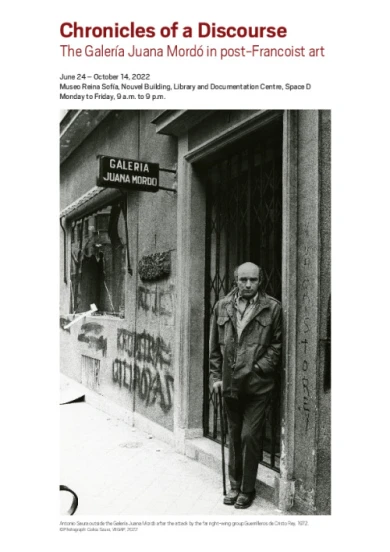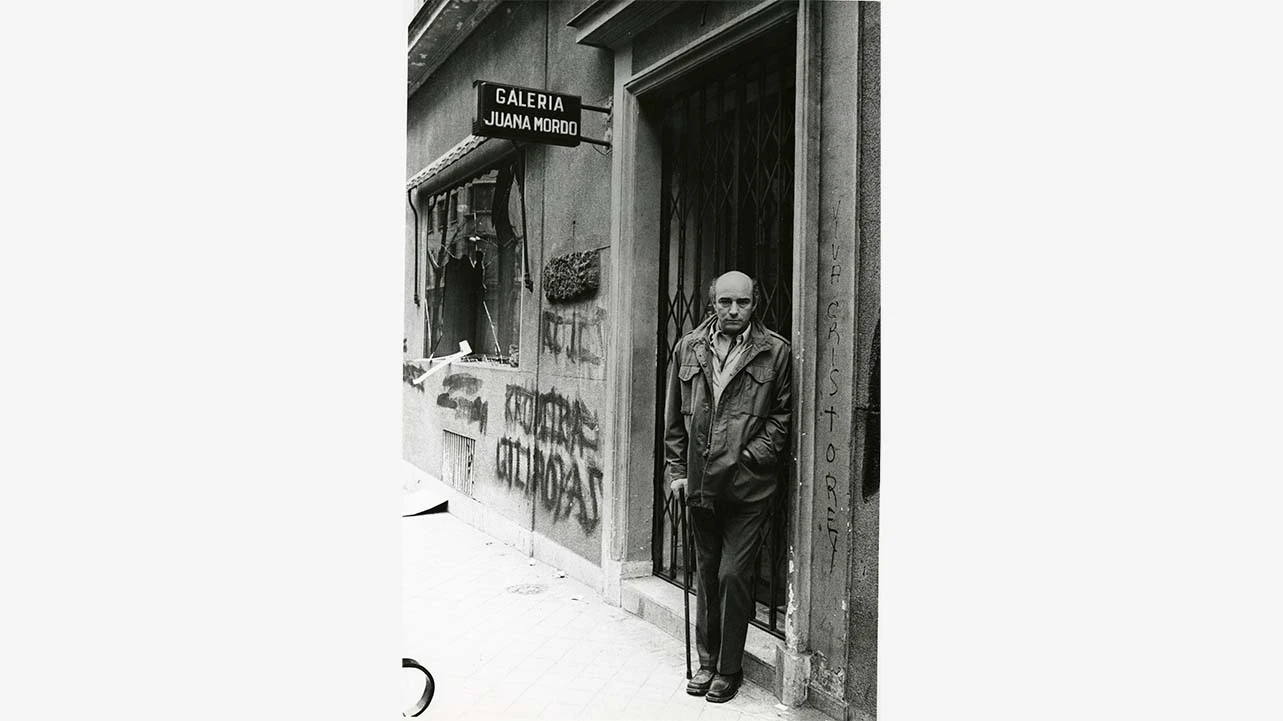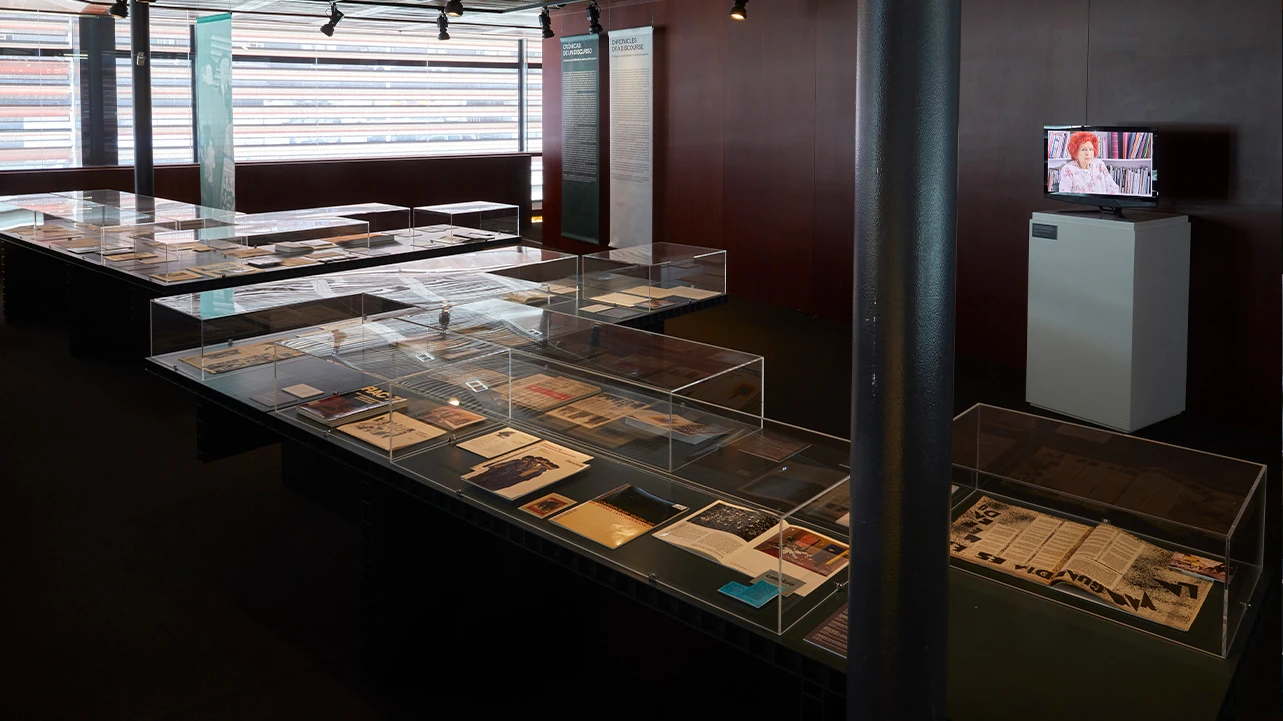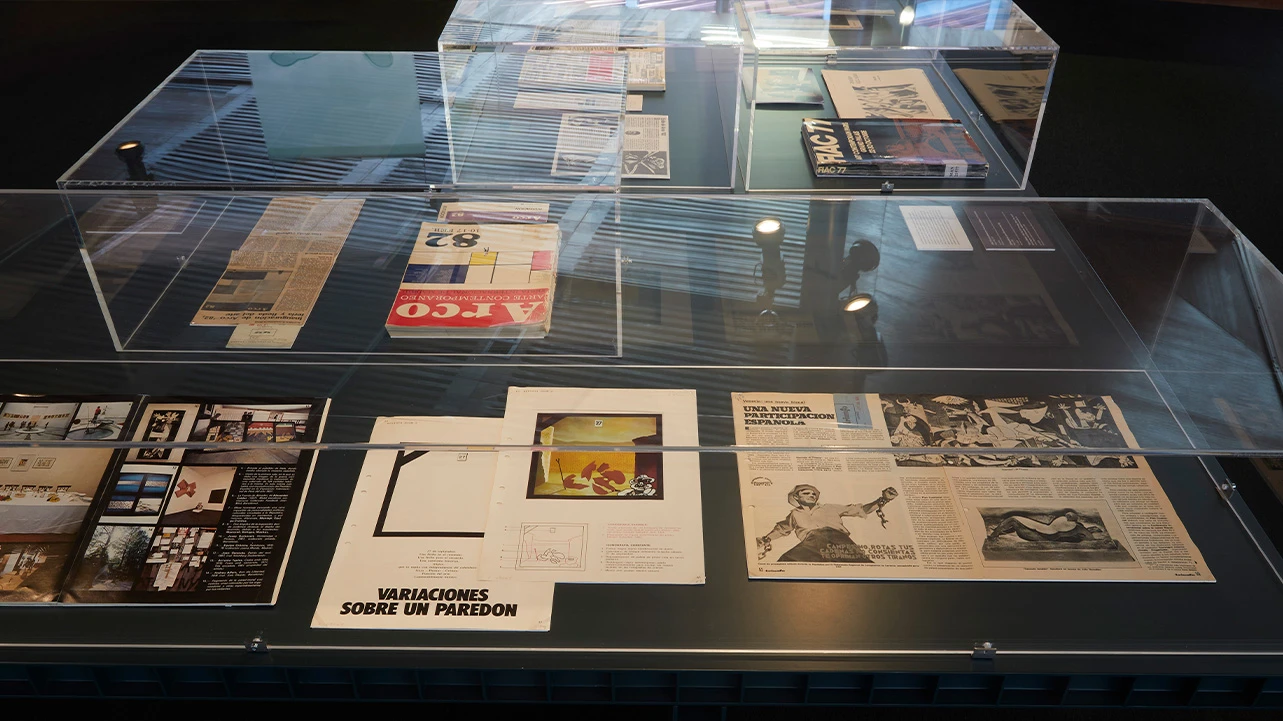Chronicles of a Discourse
Galería Juana Mordó in Post-Francoist Art
From the 1970s onwards, discourses on the role of Spanish art in Spanish society became more diverse. Part of the shifting aesthetic and ideological paradigm caused by the transition to democracy in the country, Galería Juana Mordó (1964–1994) was a stage that bore witness to the disputes between different forms of art-making within a context in which different discourses proliferated, all vying to occupy a hegemonic space, a concept this show looks to take issue with. The point of departure of Chronicles of a Discourse are the materials from the gallery’s archive, used to build a narrative around three core themes: political art and the politics of art, art’s international dissemination and its relationship with the market.
After the fall of the Franco regime, a debate emerged between political art and the so-called “politics of art”, two stances which came to light in the second half of the 1970s. Political art broke through in the 37th edition of the Venice Biennale (1976) via the curatorial approach spearheaded by Tomás Llorens Serra and Valeriano Bozal, whereby an alternative history of Spanish art over the previous four decades was called for, granting a key role to pro-democracy artists. In this context, Galería Juana Mordó became an open space for counter-hegemonic approaches, illustrated by the presence of the ZAJ Group and Equipo Crónica, or the signing of the Afrocán Document by Martín Chirino. This opening out to overtly anti-Franco positions at times brought the gallery into conflict and it was the target of two attacks in the 1970s. In 1979, Juan Manuel Bonet, Ángel González and Francisco Rivas presented 1980 in Galería Juana Mordó, a markedly programmatic exhibition reflecting the will to move beyond political art in pursuit of a sensualist and obliging art with its own discipline.
Spanish art’s internationalisation is another of the central themes in the show in the light of curators, critics and gallerists trying to redefine the idea of Spanish art to the outside world in this period, whether it was underscoring its free, hedonistic nature or its critical and combative intent. These intentions were highlighted at different international encounters — for instance different editions of the International Contemporary Art Fair (FIAC) in Paris — and overseas shows, such as Contemporary Spanish Art (1984) at Chase Manhattan Bank in New York.
The third and final core strand of the exhibition explores the art market as one of the main channels of modernisation following the aesthetic stagnation that set in under Francoism, denoting another watershed moment for Spanish art’s image. The desire to internationalise art led to the appearance of fairs such as ARCO and they advocated its adaptation to the predominant business and capitalist logics in the international sphere. In opposition to this commercialisation came certain practices which helped to blur the limits between high and low culture, representing a change in the perception of Spanish art and ushering in new ways to connect with the market place.
Through these central themes, Chronicles of a Discourse underlines the impossibility of building one sole narrative around what is socially understood by Spanish art, pinpointing other discursive strains that emerged in the Late Francoism period and the Transition to democracy, strains that are yet to be resolved today.
Curators
Mike Batista Ríos, Joana Bravo, Claudia Desile Abraham, Alba Esparza Comalat, Paula García Robleño, Isabel Hernández-Gil, Clara Kozak Luaiza, Rosita Mariella, Alejandra Marquerie Martín, Milagros Pellicer Planells and Carla Pinel Martínez
Programme
Documentary Exhibitions, Library and Documentation Centre
Acknowledgements
A nuestrxs compañerxs: Lara Elisabeth Goicoechea Armijos, Claudio Hontana Muñoz, Carmen Izquierdo Clemente, Juan Manuel Martín Senso, Jesús Pascual Sánchez Herrera, Roberto Riccardo Alvau, María Sanchis Parras y Ana Vázquez Gorostizu. A todo el equipo de la Biblioteca del Museo, especialmente a Isabel Bordes Cabrera, Estrella Delgado María, Elena García Cañibano, Almudena Gómez Valcárcel, Ana Iturgáiz Rodríguez, Olga Martínez Martínez y Alberto Medina Morales. A los departamentos de Actividades Editoriales y Actividades Públicas. A Juan Manuel Bonet, Sergio Rubira y Daniel Verdú por compartir sus experiencias y conocimientos. A nuestro tutor, Daniel Lesmes González. A Noemí del Haro, Alicia Fuentes Vega, David Moriente y Rocío Robles Tardío por su labor como coordinadores. A Juana de Aizpuru, Borja Casani y Armando Montesinos por sus entrevistas.
Organised by
An exhibition put together by students from the Art Theory and Criticism module on the MA in Contemporary Art History and Visual Culture, organised jointly by the Autonomous University of Madrid, the Complutense University of Madrid and Museo Reina Sofía.
Education programme developed with the sponsorship of
Fundación Banco Santander
Additional material

Chronicles of a Discourse. Galería Juana Mordó in Post-Francoist Art
Download PDFExhibition information sheet
Image gallery


